

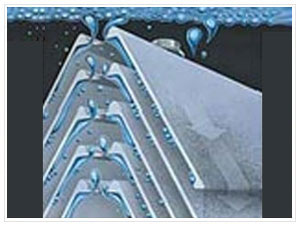
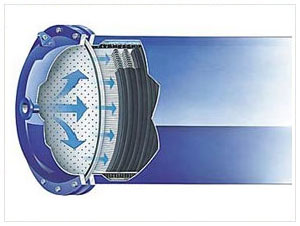
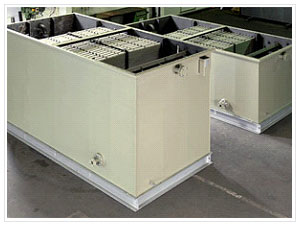
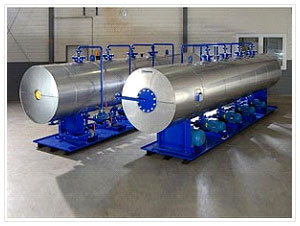
Why Phase Separators?
Phase separators remove droplets with diameters >0.1µm from liquid/ liquid dispensions. The resulting improvement in the purity of liquid recovered from both dispersed and continuous phases increases product quality and reduces the need for downstream treatment. FRANKEN Phase separators thus increase profits significantly as the investments and operating costs are low.
Phase Separators ('Separators') : FRANKEN designed separators guarantee a very high performance because of application of state-of-the-art design rules based on empirically verified CFD design models and use of the proprietary range of high performance internals.
Design philosophy : Droplete- droplet coalescence on microfibre, wire mesh and profile surfaces allows large droplets ( d> 1,000 µm) to form quickly and efficiently. As these droplets flow through the phase separator vessel, density differences cause them to migrate to the liquid interface under the influence of gravity.
Since coalescence is a mechanical separation process, it cannot remove the dissolved liquids.
Perfect Separation : FRANKEN phase separators are designed for optimal coalescence in separating organic or aqueous droplets.To design each separator the major parameters are
1. Droplet size distribution at the inlet
2. Wetting behavior of the two liquids
3. Interfacial tension.
Separation task defines the phase separation procedure :
| PT phase Separator | MPT phase Separator | PTG phase Separator |
| Fine droplets >0.1µm | medium droplets >10µm | coarse droplets >50µm |
| Coalescence process - Droplet formation and separation | ||
| In Microfibre beds | At profile surfaces | At the interface |
| Flow guides the fine droplets to the micrifibers | Density difference guides the droplets to the profile surfaces | Coarse droplets shift to the interface under gravity |
| Droplet-droplet coalescence (collection of droplets) at the fiber cross points | Droplet-droplet coalescence at the profile surfaces | Droplet- droplet coalescence at the interface |
| Displacements of coarse droplets (d >1,000µm) at the fiber bed | Displacements of coarse droplets ( d > 1,000µm) at certain profile areas | |
.
Process Conditions :
| Units | PT | MPT | PTG | |
| Density difference | Kg/m3 | >10 | >50 | >150 |
| Viscosity of continuous phase | Mpas | <500 | <20 | <5 |
| Viscosity of dispersed phase | Mpas | <500 | <1,000 | <2,000 |
| Interfacial tension( no surfactants) | mN/m | >2 | >2 | >2 |
| Maximum concentration of dispersed phase | vol% | <10 | Any | Any |
| Differential pressure (clean/ maximum) | bar g | <0.05/1.5 | <0.02 | <0.02 |
| Solid particles | µm | <5 | <25 |
Application :
| PT Phase separator | MPT Phase separator | PTG Phase separator |
| Product treatment - water from silicone oil - water from polycarbonate |
Biodiesel - Glycerine from methyl ester - Fatty acid from glycerine water |
Process enhancement - Water from cumene - Raffinate from methyl pyridine |
| Process enhancement - Rh solution from aldehyde - extractant from Cs solution - benzene fron hydrochloric acid |
Hydrocarbons from waste water Process enhancement - Caustic soda from vinyl chloride - Silicone oil from hydrochloric acid |
Capacity Enhancement - Reservoir water from crude oil - MCB/DCM from waste water - Hydrocarbon from water |
Benefits :
Focus on the Environment :
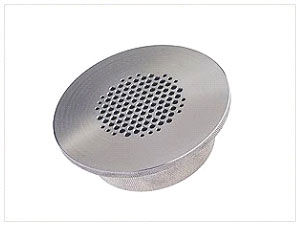
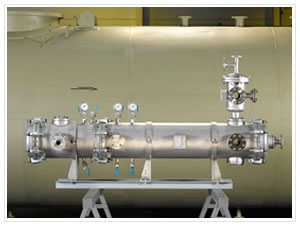
Referance Installations
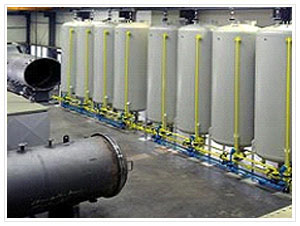
2x 4-stage ion-exchange system for the purification of Biodiesel;
Capacity: 20 MMgy
Locations:
Europe: Austria, Germany, Netherlands,
USA : Arkansas, California, Missouri, Texas
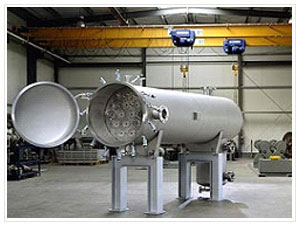
PT phase separator for the separation of watery phase from RME;
Capacity: 25 m³/h; 35 MMgy
Locations:
Europe: Austria, Germany, Great Britain
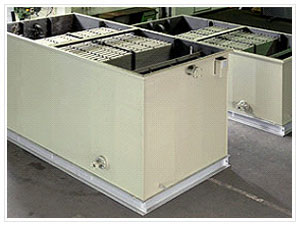
MPT phase separator for the separation of glycerine from methyl ester;
Capacity: 17,5 m³/h (4,600 gal/h),
Separation efficiency: all droplets > 25 µm
Locations:
Asia: India, Malaysia, Singapore Australia, USA
Europe: France, Germany, Great Britain, Spain
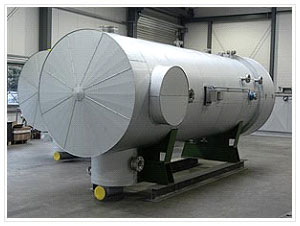
PT phase separator for the separation of glycerine water from methyl ester;
Capacity: 52 m³/h; 80 MMgy
Locations:
Australia
Europe: Austria, Germany, Great Britain